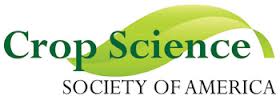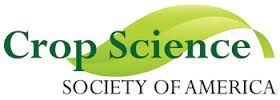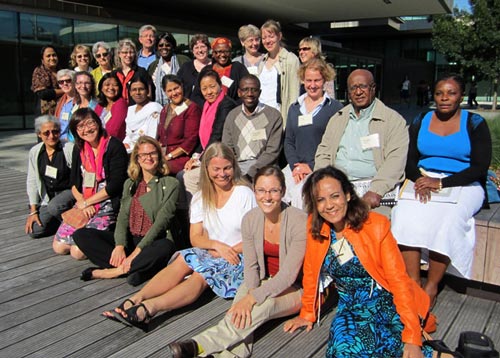CIMMYT scientist wins award from Crop Science Society of America
 MEXICO CITY, MEXICO (26 October 2012) — CIMMYT (The International Maize and Wheat Improvement Center) announced today that the Crop Science Society of America (CSSA) has given CIMMYT’s Dr. Ravi P. Singh its 2012 Crop Science Research Award.The award was presented at the CSSA annual meeting in Cincinnati, OH and recognizes Dr. Singh’s work fighting wheat diseases. The award is given to one person annually. Dr. Singh is the first CIMMYT scientist to receive the honor.
MEXICO CITY, MEXICO (26 October 2012) — CIMMYT (The International Maize and Wheat Improvement Center) announced today that the Crop Science Society of America (CSSA) has given CIMMYT’s Dr. Ravi P. Singh its 2012 Crop Science Research Award.The award was presented at the CSSA annual meeting in Cincinnati, OH and recognizes Dr. Singh’s work fighting wheat diseases. The award is given to one person annually. Dr. Singh is the first CIMMYT scientist to receive the honor.
Dr. Singh is recognized as one of the foremost authority on rust diseases of wheat. He has identified 20 genes for different traits in wheat and molecular markers for several major and minor rust resistance genes. Singh’s contributions to wheat genetics, pathology and breeding have resulted in the release of over 200 wheat cultivars, including 20 that are resistant to Ug99 stem rust, in numerous developing countries. His methodology for developing high yielding cultivars with durable rust resistance and the breeding lines derived from this work have changed not only wheat breeding at CIMMYT but also in numerous breeding programs both in developing and developed countries. His competence and the respect of fellow scientists are widely recognized, and Singh has helped train over 500 developing country scientists and served as advisor for 18 MS and PhD students.
Dr. Singh is a Distinguished Scientist and the Head of Bread Wheat Improvement at CIMMYT. He received B.S. and M.S. degrees from Banaras Hindu University, India, and a Ph.D. degree from the University of Sydney. Singh has authored or co-authored 150 refereed journal articles, 24 book and book chapters and reviews, 77 symposia proceedings, and 182 abstracts. He is a fellow of numerous scientific organizations, including ASA, CSSA, APS and National Academy of Agricultural Science of India, and has received awards such as International Service in Crop Science Award from CSSA, Outstanding CGIAR Scientist, E.C. Stakman Award from the the University of Minnesota, and Jinding and Caiyun Medals from the Sichuan and Yunnan Province Governments of China.
The Crop Science Society of America (CSSA), founded in 1955, is an international scientific society comprised of 6,000+ members with its headquarters in Madison, WI. Members advance the discipline of crop science by acquiring and disseminating information about crop breeding and genetics; crop physiology; crop ecology, management, and quality; seed physiology, production, and technology; turfgrass science; forage and grazinglands; genomics, molecular genetics, and biotechnology; and biomedical and enhanced plants.
About CIMMYT
Headquartered in Mexico, the International Maize and Wheat Improvement Center (known by its Spanish acronym, CIMMYT) is a not-for-profit agriculture research and training organization. The center works to reduce poverty and hunger by sustainably increasing the productivity of maize and wheat in the developing world. CIMMYT maintains the world’s largest maize and wheat seed bank and is best known for initiating the Green Revolution, which saved millions of lives across Asia and for which CIMMYT’s Dr. Norman Borlaug was awarded the Nobel Peace Prize. CIMMYT is a member of the CGIAR Consortium and receives support from national governments, foundations, development banks, and other public and private agencies.
For more information, please contact:
Chris Cutter, CIMMYT, c.cutter@cgiar.org, +52 (1) 595 104 9846

 “The workshop was a great opportunity to share ideas and lessons learned, to exchange concepts of different gender strategies, as well as to discuss the latest gender-related research methods,” said Beuchelt. The workshop identified four themes for cross-program research on gender and agriculture: (1) engendering agricultural value chains; (2) gender-transformative approaches; (3) gender and technology adoption and diffusion; and (4) gender and nutrition. The participants also agreed upon a shared set of gender-responsive research outcomes that can be jointly monitored to assess progress towards CGIAR System Level Outcomes. Furthermore, they discussed how to measure these outcomes and agreed to continue collaboration on the development and measurement of a shared set of genderresponsive indicators.
“The workshop was a great opportunity to share ideas and lessons learned, to exchange concepts of different gender strategies, as well as to discuss the latest gender-related research methods,” said Beuchelt. The workshop identified four themes for cross-program research on gender and agriculture: (1) engendering agricultural value chains; (2) gender-transformative approaches; (3) gender and technology adoption and diffusion; and (4) gender and nutrition. The participants also agreed upon a shared set of gender-responsive research outcomes that can be jointly monitored to assess progress towards CGIAR System Level Outcomes. Furthermore, they discussed how to measure these outcomes and agreed to continue collaboration on the development and measurement of a shared set of genderresponsive indicators.